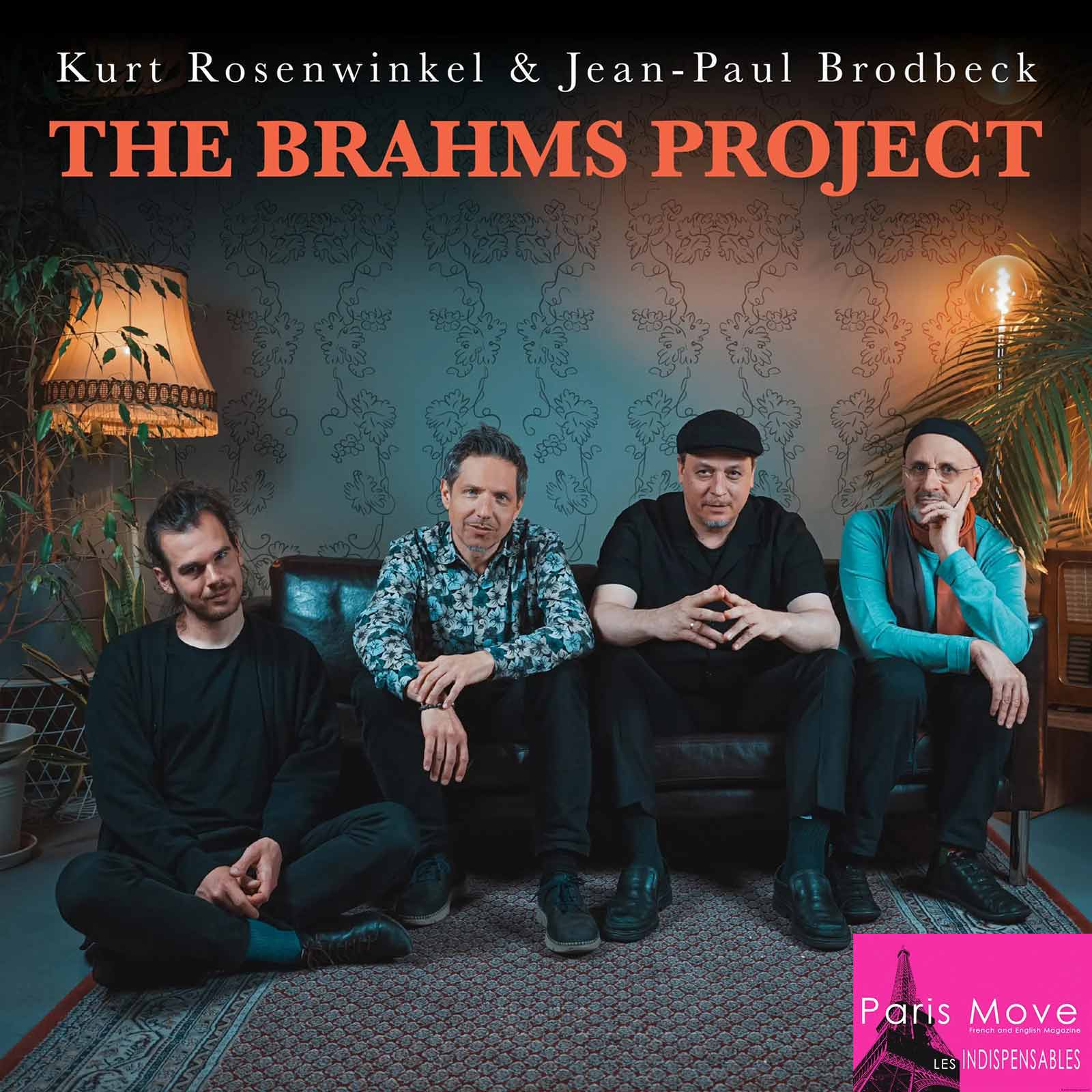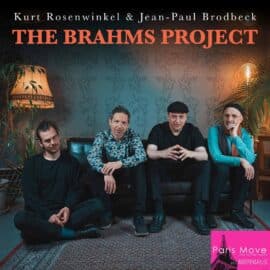| Jazz |

It takes either complete madness or extraordinary inspiration to dare tackle Brahms in such a way. Fortunately, the musicians behind this project fall squarely into the latter category. They take the themes suggested on the album cover, twist and stretch them to their limits, and invite us into a world fueled by a deep, infectious passiona passion that bridges classical music and jazz, wandering through many unexpected detours before delivering an album that is truly original. It is clear that years of diverse experience have shaped the exceptional quality of the arrangements. Most fascinating of all, these musicians pull you deep into their inner landscapes, only to snap you back, sometimes quite abruptly, to the tangible reality of their vision. And somehow, it works.
“Brahms’ work had an immense emotional impact on me and profoundly shaped my artistic journey, paving the way for this musical project,” confides Brodbeck. Indeed, anyone who has studied classical music at some point in their life has struggled with Brahms; yet few have dared to deconstruct his work to such a degree. There were a few half-hearted attempts back in the 1970s, but they have, thankfully, faded into musical oblivion.
“We approached these compositions with deep reverence and a sincere fidelity to the spirit of the work, while imprinting them with our own artistic identity and personal vision. The musical telepathy we felt while playing together made it much easier to create these arrangements and adaptations of Brahms for the quartet,” Brodbeck explains.
Every artist carries a cultural imprint. It might come from classical music, soul, blues, world music, or rock; the path matters little many roads lead to jazz. Broadly speaking, there is a European school, often rooted in classical training, and a North American one, where all cultural sources blend freely. What makes the collaboration between Kurt Rosenwinkel and Jean-Paul Brodbeck so fascinating is how naturally these two traditions intertwine. The strength of their project lies in a profound, almost obsessive introspection around Brahms’ work—the same remarkable process they had already undertaken with “The Chopin Project” in 2022. It is difficult, unless one is a musician, to grasp the amount of research, reflection, and sheer hours of labor required for such an endeavor. The price of an album seems a small thing when weighed against the magnitude of this effort.
There is magic in a few notes of “Wiegenlied”, stripped down, sincere, and it is perhaps here that the intensity of their work is most palpable. The Brahms is as surprising and inventive as it is complex and rewarding to listen to. It is an unexpected proposal, yet one that feels entirely at home among today’s most inspired productions. These musicians have pushed their creative powers to extraordinary heights, rewriting Brahms in their own image. The result is complex, luminous, restrained, a true delight.
Thierry De Clemensat
Member at Jazz Journalists Association
USA correspondent for Paris-Move and ABS magazine
Editor in chief – Bayou Blue Radio, Bayou Blue News
PARIS-MOVE, April 27th 2025
Follow PARIS-MOVE on X
::::::::::::::::::::::
Tour dates:
Tuesday, April 29 – Oakland – Yoshi’s
Thursday, May 1 – Cincinnati – Caffè Vivace | Coffee House, Jazz Lounge
Friday, May 2 – Indianapolis – The Jazz Kitchen
Saturday, May 3 – New York – Carnegie Hall (Zankel Hall)
Wednesday, May 7 – Chrisses Jazz Cafe Philadelphia
Thursday, May 8 – 11, 2025 – Chicago – Jazz Showcase
Friday, May 16 – Exit Zero Jazz Festival – Kurt Rosenwinkel
Musicians:
Kurt Rosenwinkel – Guitar
Jean-Paul Brodbeck – Piano
Lukas Traxel – Acoustic Bass
Jorge Rossy – Drums
Tracklist:
Hungarian Dance No. 1
Intermezzo, Op. 117, No. 2
Intermezzo, Op. 118, No. 2
Rhapsody, Op. 79, No. 1
Wiegenlied
Intermezzo, Op. 116, No. 6
Symphony No. 3 – III. Poco Allegretto
Hungarian Dance No. 5
Ballade, Op. 10, No. 4
Symphony No. 4 – III. Allegro Giocoso

